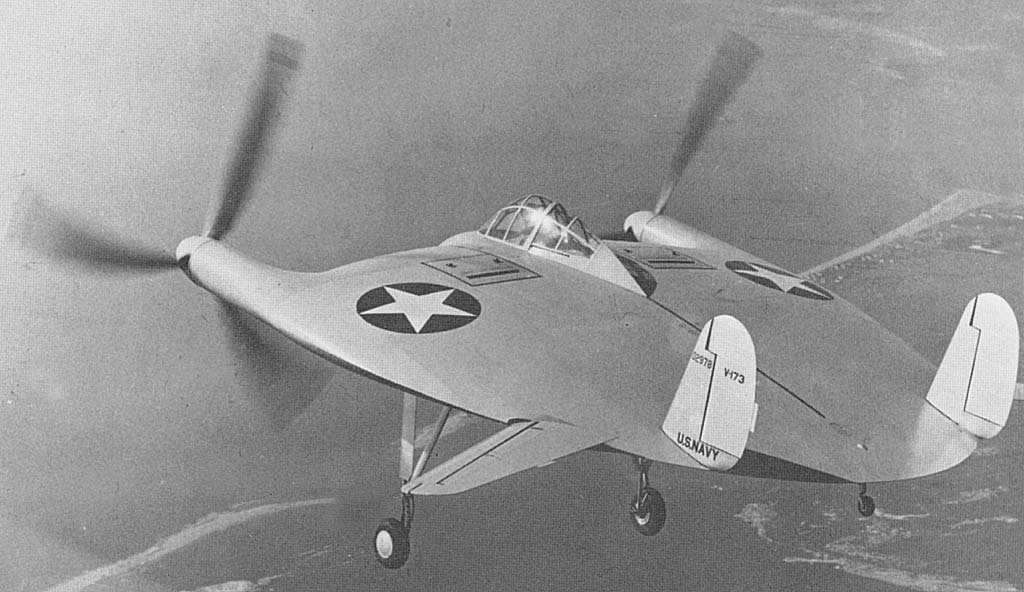Do you Like Prime Numbers?
I still don't know why, but Potato always wins these kinda questions.
Comment has been collapsed.
I like prime numbers, too.
If you want to help to find a new prime, try PrimeGrid. https://www.primegrid.com/
Comment has been collapsed.
Why are you doing this ;_; you are disrupting the natural balance of the universe
Comment has been collapsed.
You're not jatan but here
Video
Wikipedia
The Vought V-173 Flying Pancake
The Vought V-173 "Flying Pancake" designed by Charles H. Zimmerman was an American experimental test aircraft built as part of the Vought XF5U "Flying Flapjack" World War II United States Navy fighter aircraft program.
Both the V-173 and the XF5U featured an unorthodox "all-wing" design consisting of flat, somewhat disk-shaped bodies (hence the name) serving as the lifting surface. Two piston engines buried in the body drove propellers located on the leading edge at the wingtips.
Design and Development
In the 1930s, Charles Zimmerman was a noted aeronautical engineer who advocated the concept of "discoidal" aircraft, the so-called "Zimmer's Skimmers"[3] and worked on a variety of projects on his own and with the Vought company. After testing using scale models, including a remotely controlled, electrically powered large-scale model, designated the Vought V-162, the US Navy approached Zimmerman and offered to fund further development. Data and concept documentation was given to the Navy in 1939, with wind tunnel tests on full-scale models being completed in 1940-1941.
The original prototype, designated the V-173 (Flying Pancake), was built of wood and canvas and featured a conventional, fully symmetrical aerofoil section (NACA 0015). Designed as a "proof-of-concept" prototype, the initial configuration V-173 was built as a lightweight test model powered by two 80 hp (60 kW) Continental A-80 engines turning F4U Corsair propellers. These were replaced by a pair of specially modified 16 ft 6 in three-bladed units. A tall, fixed main undercarriage combined with a small tailwheel gave the aircraft a 22° "nose-high" angle.[4]
Ground testing of the V-173, c. 1942
The disc wing design featured a low aspect ratio that overcame the built-in disadvantages of induced drag created at the wingtips with the large propellers actively cancelling the drag-causing tip vortices. The propellers were arranged to rotate in the opposite direction to the tip vortices, allowing the aircraft to fly with a much smaller wing area. The small wing provided high maneuverability with greater structural strength.
In January 1942, BuAer requested a proposal for two prototype aircraft of an experimental version of the V-173, known as the VS-135. The development version, the Vought XF5U-1, was a larger aircraft with all-metal construction, and was almost five times heavier.[5]
Operational history
The first flight of the V-173 was on 23 November 1942 with Vought Chief Test Pilot Boone Guyton at the controls. The aircraft's most significant problem concerned its complicated gearbox that routed power from the engines to its two long propeller shafts. The gearbox produced unacceptable amounts of vibration in ground testing, delaying the aircraft's first test flight for months. Flight testing of the V-173 went on through 1942 and 1943 with 190 flights, resulting in reports of UFOs from surprised Connecticut locals.[6] Charles Lindbergh piloted the V-173 during this time and found it surprisingly easy to handle and exhibiting impressive low-speed capabilities. On one occasion, the V-173 was forced to make an emergency landing on a beach. As the pilot made his final approach, he noticed two bathers directly in his path. The pilot locked the aircraft's brakes on landing, causing the aircraft to flip over onto its back. Remarkably, the airframe proved so strong that neither the plane nor the pilot sustained any significant damage.
The developmental V-173 made its last flight 31 March 1947. In 131.8 hours of flying over 190 flights, Zimmerman's theory of a near-vertical takeoff- and landing-capable fighter had been proven.[8] The V-173 is now part of the Smithsonian collection at the Paul E. Garber Preservation, Restoration, and Storage Facility in Silver Hill, Maryland. It is currently at the Vought Aircraft plant in Grand Prairie, Texas being restored to go back on display. As of April 2012 it is on loan to the Frontiers of Flight Museum in Dallas, Texas.
Specifications
General characteristics
-
Crew: One, pilot
-
Length: 26 ft 8 in (8.128 m)
-
Wingspan: 23 ft 4 in (7.1 m)
-
Height: 14 ft 9 in (4.51 m)
-
Wing area: 427 ft2 (44.2 m2)
-
Loaded weight: 2,258 lb (1,024 kg)
-
Powerplant: 2 × Continental A-80 horizontally opposed, four-cylinder engines, 80 hp (60 kW each) each
Performance
-
Maximum speed: 138 mph (222 km/h)
-
Rate of climb: to 5,000 ft in 7 min (1,100 m in 5 min)
Comment has been collapsed.
[HUMBLE BUNDLE] Untold Tales' Indie Roulette Bu...
11 Comments - Last post 16 minutes ago by Foxhack
[Indiegala] Gameplay Giveaway
8,669 Comments - Last post 16 minutes ago by IronKnightAquila
【🖥️ Epic Games】Freebies List|2025-07-17 - 🎮 CIV...
966 Comments - Last post 2 hours ago by MeguminShiro
[FANATICAL] Build your own rogue souls bundle (...
18 Comments - Last post 4 hours ago by AxJ
[FREE][STEAM] DOGWALK
21 Comments - Last post 5 hours ago by ViTALiTY
[FREE][STEAM][ALIENWAREARENA] Chivalry 2, Parce...
3,080 Comments - Last post 8 hours ago by ParadaimiX
[FREE][STEAM] 422 Soundtracks you can activate ...
212 Comments - Last post 9 hours ago by pb1
The Cakeday is a lie!
177 Comments - Last post 14 minutes ago by Habaruku
I hate this J
8 Comments - Last post 18 minutes ago by Kappaking
Totally real discussion and not devious scheme
3 Comments - Last post 29 minutes ago by Kegfarms
Новая цензура в стиме. / New censorship on Steam.
153 Comments - Last post 38 minutes ago by Kappaking
July is a "play a game you won on Steamgifts" m...
198 Comments - Last post 1 hour ago by Esotilin
Steam Game Idler - An all-in-one alternative to...
149 Comments - Last post 2 hours ago by Raggart
easy for train
28 Comments - Last post 2 hours ago by charlbow














173 is a prime number. A prime number is a natural number greater than 1 that has no positive divisors other than 1 and itself.
A natural number greater than 1 that is not a prime number is called a composite number.
Example: X-mas eve Lands on the 358th day, the 24th of the Month of December, a Composite number, Divisable by both 1 and 2.
Comment has been collapsed.